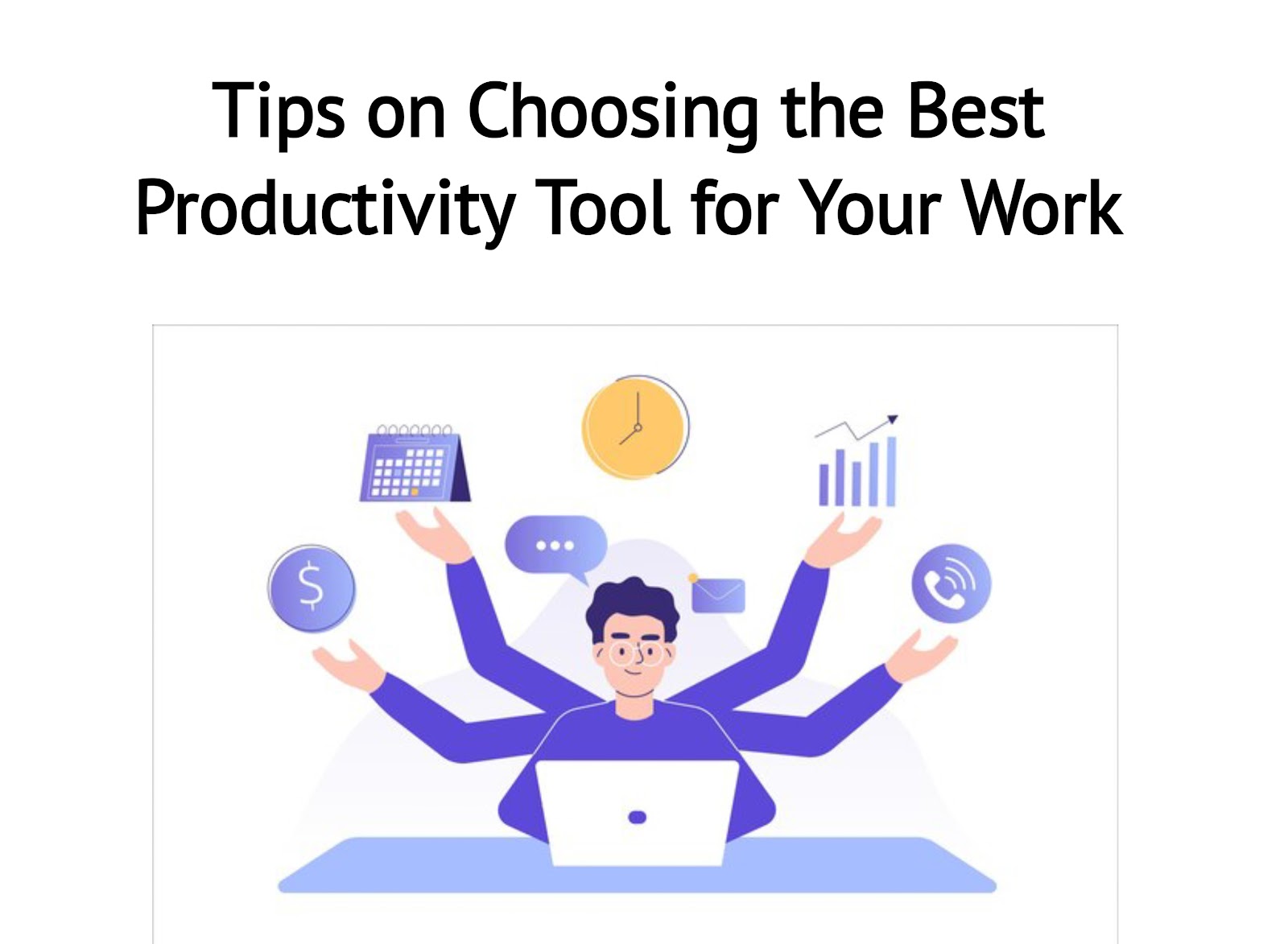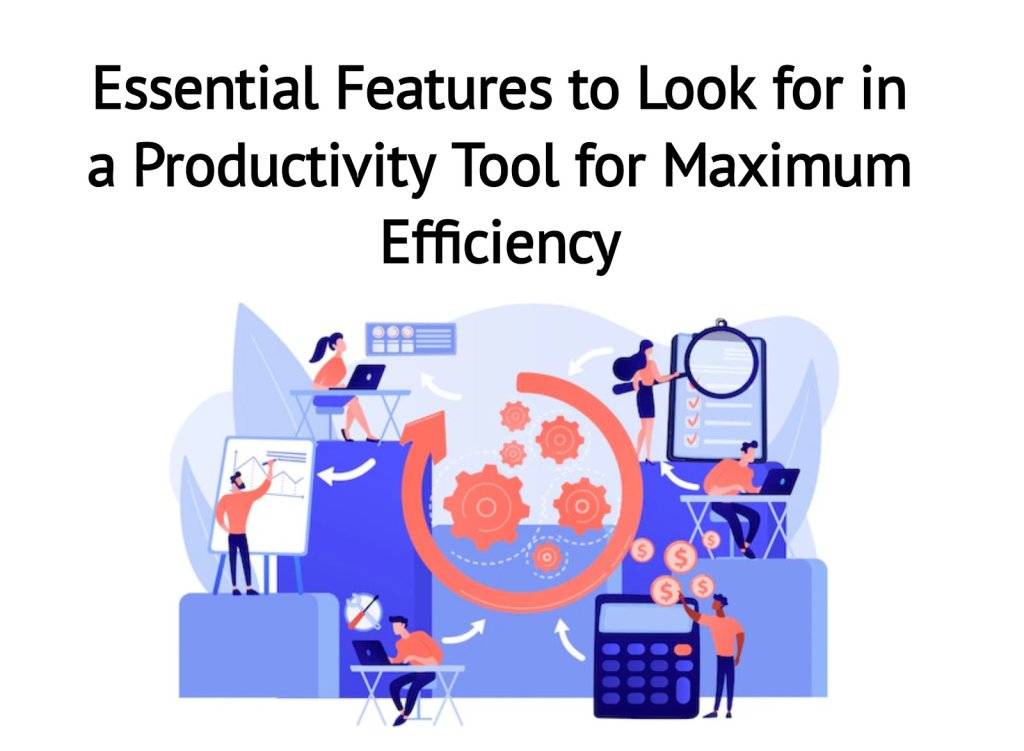A productivity tool should make your work less tiring, and not complicated. With so many options available, choosing the right one can be confusing. Some tools have lots of better features that you will never use. And then there are those without the basics that you need for maximum productivity.
A top productivity tool will help automate your workflow, enhance collaboration, and get rid of manual processes that consume so much time. In this post, we will go through the core features that you simply must have in a tool to make you most productive. This will help you to select the solution that helps you to do more.
Essential Features All Productivity Tools Should Have
Features will be as good as your productivity tool gets. If it slows you down instead of speeding things up, it’s not effective. With CRM, email deliverability integration, automation, and workflow management tools all in one for sales teams. An example of essential features in one tool is Sparkle.io. Sparkle Tool puts everything into one flow for a smoother workflow.
Here are 11 top essential features you should look out for in a productivity tool.
1. Task Automation & Scheduling:
You need a tool that helps you to manage tasks from a single place. From creating and managing individual tasks to assigning them to others. You will be able to rightly prioritize and meet deadlines with a tool that has automation and scheduling features.
2. Ease of Collaboration:
Whether you are a freelancer or part of a team the tool must process updates in real-time. As a freelancer, this is an important feature as your client needs to get updates per time. You should also be able to communicate and share multimillion files easily.
3. Data Syncing:
If you switch between devices frequently, your tool should adapt seamlessly. If you want to be as productive as possible, a tool must be able to sync across mobile, desktop, and web. A tool that doesn’t have this feature will complicate your work processes.
4. Security and Backup:
Have you ever felt the deep pain of losing your work because of a system crash or a breach in security? That’s when you’ll appreciate a tool with secure backup capabilities. This is why these tools must be secure and have active backups to protect your data.
5. Smart Notifications & Reminders:
These tools should be able to send notifications that are necessary and timely. This will keep you updated and remind you of tasks you haven’t completed.
6. Version Control and Document Management:
To cope properly with collaboration, it is important that a change can be tracked. This feature makes it possible for the last version of a document to be reverted to.
7. Focus Mode:
Your choice tool should provide a feature that can block notifications from certain apps during work time. This will allow you to focus on one task per time without distractions.
8. Time Tracking & Worklogs:
This time tracker feature helps users see how long they have spent on a task. It can help you highlight areas that need improvement in managing your time effectively for tasks.
9. Team Roles & Permissions:
The best tool has controlled access that enables admins to impose roles or block some functions. This feature should also be able to hide or clean sensitive data that shouldn’t be available to everyone on the team.
10. Offline Support:
A real productivity tool should let users get stuff done without an internet connection. Then effectively sync the data when they are back online.
11. Usage Analytics & Reports:
Time is used to complete a task and efficiency-based reports help users to know if you are moving forward. From the data on the reports, you can better streamline your workflow.
While a productivity tool should not make your life harder, it should make it easier. If it does not have those features, then it’s probably not worth your time.
Tips on Choosing the Best Productivity Tool for Your Work

Not all productivity tools will be what is needed for your kind of activity or job. What works for one person can be a headache for you. So, here are five great ways to decide on the right one.
1. Define your Needs:
Are you handling projects, process workflow, or a group of teammates? Find the tool that offers a solution to the challenges you’re facing in handling a particular task.
2. Ease of Use:
A complex tool will make you stressed out. It’s not efficient if it takes ages for you to figure it out.
3. Customization:
Your Workflow is unique. Opt for the customizable tools, so you can make it work precisely for your kind of work.
4. Test for Integrations:
A tool that doesn’t integrate with your current apps will slow you down. Ensure it can work with the other daily software or apps you use.
5. Scalability:
Your tool should scale with the work you get done. Choose a tool that scales effortlessly as your workload grows.
It doesn’t matter if you have the best tool, it needs to fit in with your needs otherwise it just adds an extra step in the process.
The Biggest Mistakes to Avoid While Choosing a Productivity Tool
The productivity tool you select can seldom be as bad for you as picking the wrong one. Selecting a bad productivity tool may be worse than a good one.
1. Worrying Too Much About Features:
More features don’t always mean a better product. More features don’t equal productivity. A tool with too many features will slow you down with loads of useless extras.
2. No User Experience:
Nothing wastes more time than a tool that is hard to navigate. You’re wasting time if a tool is frustrating to use. It should go through the usability test first and can be used if its User interface is easy to understand.
3. Working with the Wrong Protocol:
When the tool is not compatible with your current apps it will simply make doing things harder rather than easier. If your tool isn’t compatible with your current apps, it will complicate things.
4. The Skipping of Security Check:
Security should never be compromised for productivity. Look for tools that prioritize security, encrypt protected data, and provide regular backups.
5. Not Thinking About The Long Term:
A great tool today may become a limitation as your needs outpace it. It may be working now but cannot scale with you going forward. A tool that currently works but stagnates when your needs change is inevitably starting to restrict you, even if it’s just now.
A productivity tool should not add complication, it should automate tasks. Avoid the following mistakes and you will get your hands on one that improves productivity.
Conclusion
The productivity tool that you need is not a tool with the most features; instead, it has to have the right features. Task, collaboration and automation, integrations, workflows, or security are the minimum features for maximum productivity. Nothing replaces a tool that’s easy to use, keeps everything in sync, and helps in doing away with repetitive insignificant tasks over a plugin that comes with excesses.
When buying or subscribing to a tool, always first try how well it fits your daily life. If it saves you time, boosts your focus, and makes your life more organized you have found the one. Efficiency is not working harder, it is working smarter with the right tools.
Frequently Asked Questions
1. What key features should I prioritize when choosing a productivity tool?
Look for features that align with your workflow. Key essentials include task automation, collaboration tools, data syncing, security, and smart notifications. Prioritizing these features ensures your tool enhances efficiency without adding complexity.
2. How can I tell if a productivity tool will integrate with my current apps?
Before committing to a tool, check its integration capabilities. Most platforms list supported apps on their website. You can also explore third-party tools to expand integration options.
3. What’s the best way to test if a productivity tool fits my needs?
Start with a free trial or demo. Focus on daily tasks, team collaboration, and how well the tool handles your current workload. Testing with real scenarios helps you gauge its effectiveness before investing.
Cassia Rowley is the mastermind behind advertising at The Bad Pod. She blends creativity with strategy to make sure ads on our site do more than just show up—they spark interest and make connections. Cassia turns simple ad placements into engaging experiences that mesh seamlessly with our content, truly capturing the attention of our audience.


